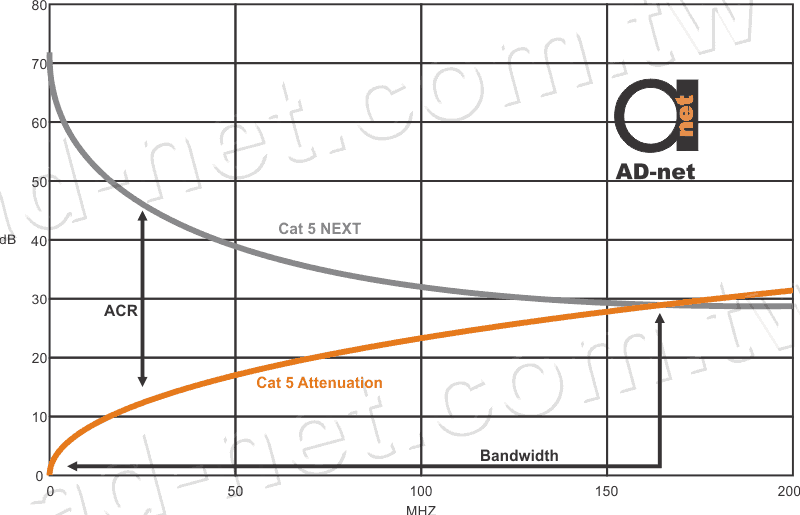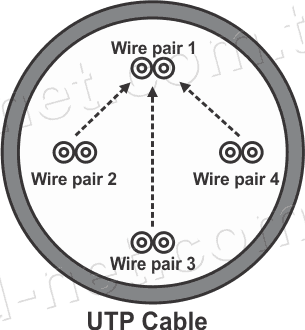Level of crosstalk in the cable can be measured in multiple ways, depending on network requirements. This article is dedicated to describe types of crosstalk and situations when it is important to measure crosstalk.
NEXT (Near-End Crosstalk)
Most commonly appears at the distance of 20-30 meters from the transmitter (60-90 feet). Reason for this crosstalk are usually poorly designed or poorly installed cables. In order to cancel the crosstalk, 10Base-T and 100Base-TX cables implement NEXT cancellation techniques by design.

FEXT (Far-End Crosstalk)
As the one might guessed, this crosstalk is the opposite of NEXT, it appears closer to the receivers end. Assuming that attenuation weakens strength of the signal at the receivers end, FEXT is something to be considered while designing the network. Shorter cables means less attenuation, which results in higher FEXT.
Attenuation-to-Crosstalk Ratio (ACR-F and ACR-N)
This ratio is representing how much larger is the signal strength over the NEXT or FEXT crosstalk. The value is important for defining how long the cable could be before the received signal at the end would be unreadable. Standard values specified in documentation are always lower than theoretical maximum, since it would ensure proper working in any situation.
ACR (Attenuation-to-Crosstalk Ratio) or sometimes SNR (Signal-to-Noise Ratio) is not actually a ratio, but a difference between signal and noise.

Power-Sum Crosstalk
Power-Sum crosstalk is the value that is necessary to consider when using cables that contain more than one pair of wires in it. It is being measured by having signal in all the wire pairs except one. The one pair that has no signal will be measured. Measurements will be done from both ends of the cable separately. The procedure should be repeated for each of the wire pair there is in the cable. Worst value will be recorded as cables Power-Sum Crosstalk.

AXT (Alien Crosstalk)
This type of crosstalk is very similar to the Power-Sum Crosstalk, with a difference of crosstalk happening not between the wire pairs, but between the cables (this is where term “alien” comes from). This crosstalk could be avoided or minimized by avoiding tight bundling of the cables. In some cases the separators are used that physically increase space between cables. Drawback of this method is that cable diameter is increased.
Like said before, crosstalk is very important when you consider using your copper pairs to boost ethernet on longer distances, using for example such ethernet extenders.


